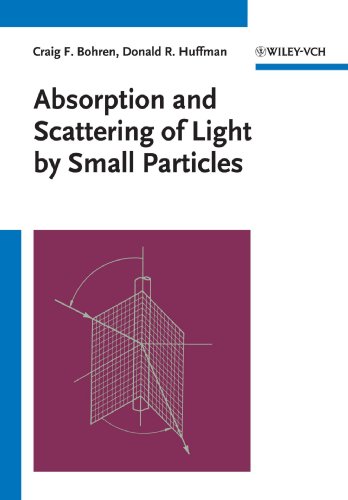Absorption and scattering of light by small particles download
Par reid beryl le mercredi, décembre 7 2016, 05:17 - Lien permanent
Absorption and scattering of light by small particles by Craig F. Bohren, Donald R. Huffman


Absorption and scattering of light by small particles Craig F. Bohren, Donald R. Huffman ebook
Publisher: John Wiley & Sons
Page: 533
ISBN: 047105772X, 9780471057727
Format: djvu
Combining this with the absorption and scattering coefficients of water, we see that the short wavelength light that is preferentially scattered back to our eyes by water will be absorbed by the small suspended particles. Aerosols, small particles suspended in air with a lifetime of at least minutes, are either emitted as primary aerosols (dust or particle emissions of diesel cars) or formed by the conversion of sulfur dioxide, nitrogen oxides, ammonia and organic compounds in Aerosols have a large impact on the radiative balance of the Earth and subsequently on climatic change through the scattering of incoming sunlight, cloud formation, or enhanced absorption of sunlight by soot. Aerosol optics : light absorption and scattering by particles in the atmosphere. Absorption and scattering of light by small particles by Craig F. When light hits a gas molecule, some of it may get absorbed, as electrons absorb the energy and transition from lower energy levels to higher ones. The physical solution is taken from Absorption and Scattering of Light by Small Particles by Bohren and Huffman. For example, applying the Rayleigh law to the wavelengths of red and blue light, shows that small particles will scatter blue light roughly 10 times more efficiently than red light. [Alex A Kokhanovsky] -- This Aerosols are small particles that influence both atmospheric visibility and the thermodynamics of the atmosphere. Absorption and scattering of light by small particles book. Aerosol Optics: Light Absorption and Scattering by Particles in the Atmosphere (Springer Praxis Books Environmental Sciences) pdf download · Edit · Delete · Tags · Autopost The work is founded on the solid basis of radiative transfer theory, coupled with Maxwell theory for the calculation of the scattering properties of small particles. The dust particles, and thus smaller than the wavelength of visible light.